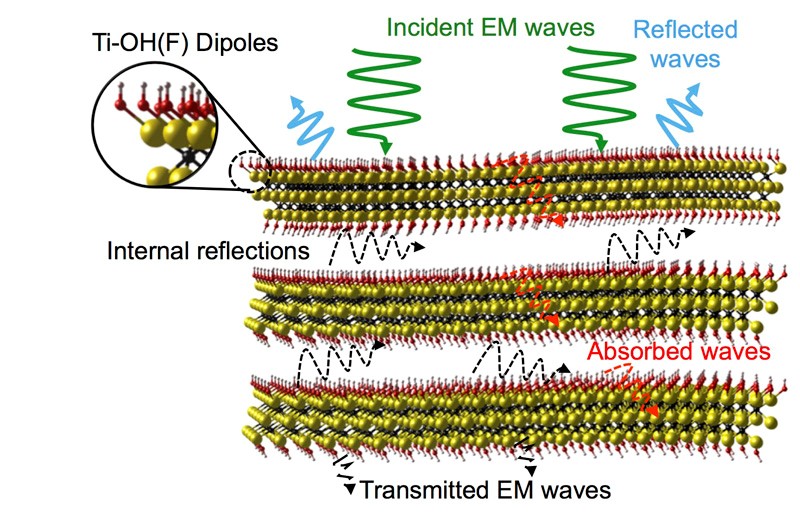Since the beginning of the universe, electromagnetic radiation has been with us. But in recent decades, both the progression of technology and proliferation of electronics have contributed to a dramatic increase in electromagnetic interference (EMI).
Electromagnetic pollution can range from that strange buzzing sound from your Bluetooth device, the temporary fuzzy display on your monitor to the feedback-like noise in your ear from your cell phone. It takes all forms, and it's increasing, leading to device malfunction and product degradation.
To combat this growing problem, researchers at Drexel University and the Korea Institute of Science & Technology have developed a spray coating made of the two-dimensional nanomaterial MXene that they claim EMI more effectively than graphene, carbon fibers, and copper or aluminum foils.
Shielding against electromagnetic interference typically includes encasing the interior of devices with a shroud or cage of a conductive metal like copper or aluminum, or a coating of metallic ink. While effective, this approach adds weight to the device and considerably limits how small the device can be made—a deal breaker for device manufacturers striving for product miniaturization.
“In general, adequate shielding can be achieved by using thick metals, however, material consumption and weight leave them at a disadvantage for use in aerospace and telecommunication applications. Therefore, it is of great importance to achieve better protection with thinner films,”
said Babak Anasori, Ph.D., a research assistant professor at the A.J. Drexel Nanomaterials Institute.
Their findings suggest that a few-atoms thin titanium carbide, one of about 20 two-dimensional materials in the MXene family can be more effective at blocking and containing EMI, with the added benefit of being extremely thin and easily applied in a coating just by spraying it onto any surface, like paint.
When combined with a polymer, MXene can be used as a spray coating to protect components from electromagnetic interference. Because it's light and thin, and has the unique ability to block and absorb electromagnetic radiation, MXene eliminates concerns about weight and volume.
The researchers tested samples of MXene films ranging in thickness from just a couple micrometers (one-thousandth of a millimeter) up to 45 micrometers, which is slightly thinner than a human hair. They found that the thinnest film of MXene competes with copper and aluminum foils for shielding effectiveness. Films thickened to 8 micrometers blocked 99.9999 percent of radiation with frequencies covering the range from cell phones to radars, the researchers noted.
MXene outperformed other synthetic materials, such as graphene or carbon fibers. To achieve commercial electromagnetic shielding requirements, currently used carbon-polymer composites add about one millimeter to a device the size of an iPhone, which is 7 mm thick. That's a lot of additional heft for so small a device.
The key to MXene’s performance lies in its high electrical conductivity and two-dimensional structure. According to the researchers, when electromagnetic waves come in contact with MXene, some are reflected from its surface while others are trapped within the layers of the material, and eventually become absorbed.
The study was published in the journal
Science.




